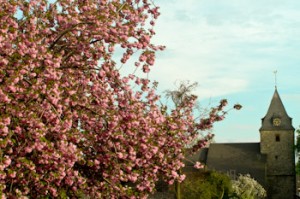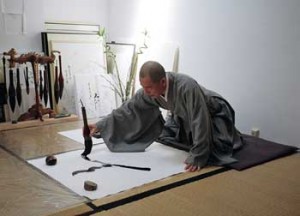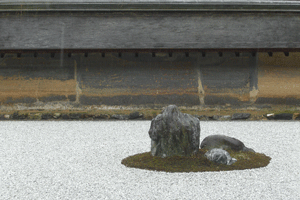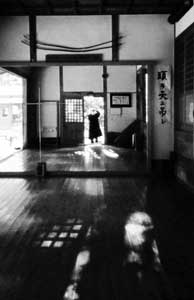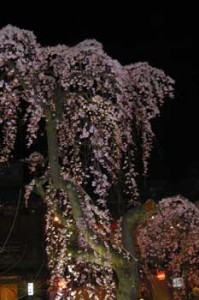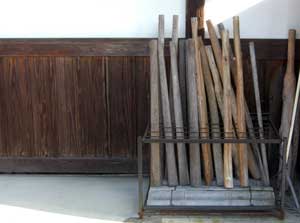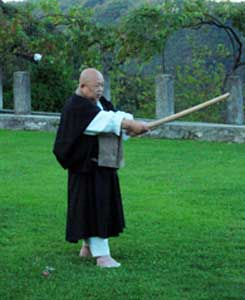A Cherry Tree
When I left Kyoto beginning of April, I was sad about missing the peak of the cherry blossom by just a few days. Back home, while longing for the sakura in Kyoto, I almost missed a remarkably old and beautiful cherry tree in full bloom right here in this village, not even five minutes from my Dojo.
I must have never walked this particular way before, the view of the tree in the evening sun was most striking and by any means comparable to the most beautiful ones I have seen in Japan!
Maybe in your Dojo you regularly chant Hakuin’s Zazen Wasan (坐禅和讃). One line says 衆生近きを知らずして, 遠く求むるはかなさよ, in my clumsy translation: a pity to seek far away, without knowing about the living things nearby. Hakuin might have talked about seeking Buddha, but finding the beauty of a local cherry tree is not much different for me.
Some Sutra texts have a relevance for our daily life, so I recommend more advanced Zen students to actually spend effort into understanding their meaning. Just chanting SHUJO CHIKAKI O SHIRAZU SHITE, TOKU MOTOMURU HAKANASA YO without caring what the strange syllables mean is a good practice for beginners, but you risk to miss a friendly hint to a Buddha just around the corner…
